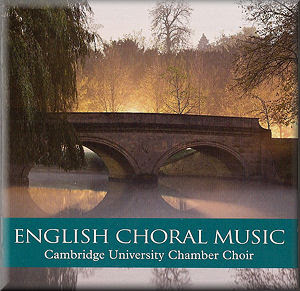‘Smart, well-written and knowledgeable’ – Saga Magazine
Monday 30 May 2011
William Alwyn: Violin Concerto
Friday 27 May 2011
Fred. Delius: Two Tales of his Childhood
Wednesday 25 May 2011
Arnold Bax: Violin Concerto
 Arnold Bax is well represented in the CD catalogues – even if a little unevenly. For example, all British music enthusiasts must be delighted (and amazed) that there are four cycles of the complete symphonies currently available – on CD or MP3. (For the record those are by Chandos with Handley and Thomson, Lyrita and Naxos).
Arnold Bax is well represented in the CD catalogues – even if a little unevenly. For example, all British music enthusiasts must be delighted (and amazed) that there are four cycles of the complete symphonies currently available – on CD or MP3. (For the record those are by Chandos with Handley and Thomson, Lyrita and Naxos). Notes:
Saturday 21 May 2011
Arnold Bax: Legend-Sonata for Cello and Piano
Thursday 19 May 2011
Gavin Bryars: Piano Concerto etc. on Naxos
Track Listing:
Tuesday 17 May 2011
Eric Coates: Sound & Vision (ATV) March
Friday 13 May 2011
E.J. Moeran Complete Solo Folksong Arrangements
Track Listing:
Wednesday 11 May 2011
Haydn Wood: the Isle of Man Works
When I got back home to London, I listened to the four works that have been recorded. Each of them is a worthy tone-poem, that in spite of using local ‘folk tines’ never becomes parochial. They are pieces that deserve recognition and study. It is a task that I will try to consider over the coming months.
According to HaydnWoodMusic.com there are another three works that have not yet been recorded. I have linked to the CD pages where the work is currently available.
A Manx Rhapsody (1931).
Mannin Veen, Dear Isle of Man, A Manx Tone Poem (1933).
As a taster I provide a link to a YouTube recording of 'A Manx Rhapsody'.
Monday 9 May 2011
Charles Hubert Hastings Parry on English Song
Thursday 5 May 2011
Adam Pounds: Notes and News
Tuesday 3 May 2011
Stanley Wilson: Ship Ahoy! for piano

I discovered this piece of piano music in the Oxfam bookshop in Worcester. If I am honest, it was the deliciously ‘camp’ –in a ‘Carry On’ sense – cover that caught my eye. I guess it would just not be possible to publish something like this in our more politically correct, sensitive days.
Stanley Wilson is a minor composer who seemed most at home with song writing. There are settings of John Masefield and A.E. Housman in the catalogues. I was unable to find any references to his life and times.
Ship Ahoy! is a set of ‘twelve nautical scenes’ for pianoforte. They were composed, or at least published in 1932 by James Forsyth in Manchester. It was rather expensively prices for its time at 3/-. A working man was probably on £2 a week!
The 12 sketches all describe some aspect of a mariners life – ‘Messmates, Ben the Bosun, Up Channel, White Horses, The Lonely Lighthouse, Breakers, The Stowaway, Davy Jones Locker, In the Hammock, Mariner’s Star, the Middle Watch and finally Blue Peter. These titles can be construed in any way the reader or player wishes!
Yet these sketches are well written, imaginative and employ a considerable technique. Apart from the composer’s predilection for augmented fifths, the musical content is varied and satisfying. I guess that the playing standard is probably about Grade 5.
But perhaps the best advert for these pieces was the opinion of a well-known (but in this case unacknowledged) pianist who suggested that these ‘Nautical Sketches’ were worthy and he would certainly use such material in his piano teaching lessons. Luckily I can play most of them, myself!
Finally, based on these pieces I would love to come across a little bit more of the music of Stanley Wilson, especially, perhaps his setting of John Masefield’s ‘Tewksbury Road’. It may be very well worth hearing. And perhaps someone out there knows something of the composer?
Sunday 1 May 2011
English Choral Music - A Garland for the Queen (1953)
Arthur BLISS (1891-1975) Aubade for Coronation Morning
Arnold BAX (1883-1953) What is it like to be young and fair?
Michael TIPPETT (1905-1998) Dance, Clarion Air
Ralph VAUGHAN WILLIAMS (1872-1958) Silence and Music
Lennox BERKELEY (1903-1989) Spring at this hour
John IRELAND (1879-1962) The Hills
Herbert HOWELLS (1892-1983) Inheritance
Gerald FINZI (1901-1956) White-flowering days Op. 37
Alan RAWSTHORNE (1905-1971) Canzonet
Edmund RUBBRA (1901-1986) Salutation
Benjamin BRITTEN (1913-1976) A.M.D.G (1939) Sacred and Profane, Op. 91 (1975) Cambridge University Chamber Choir/Timothy Brown



